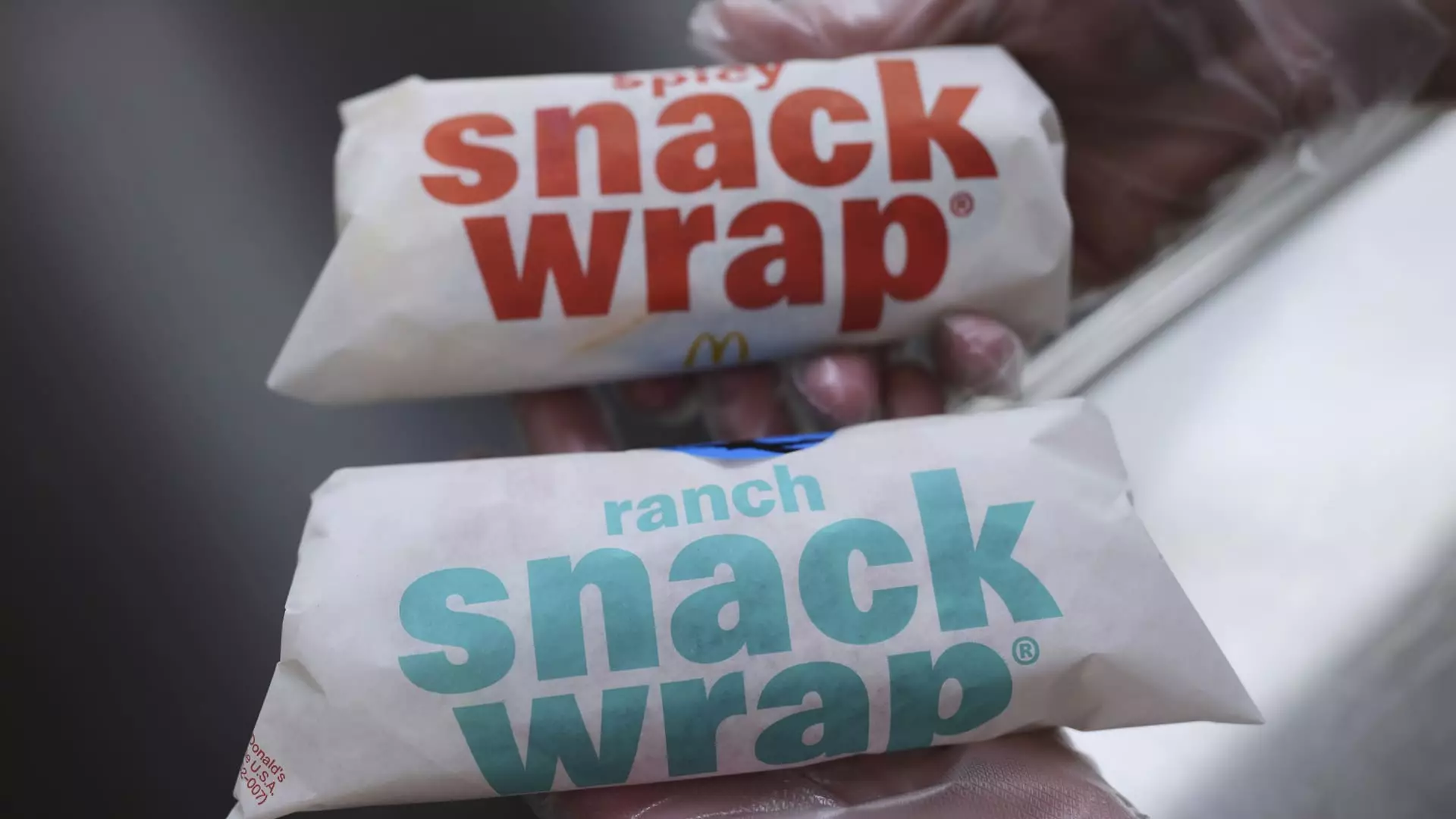McDonald’s decision to bring back the Snack Wrap after nearly a decade reveals a bold attempt to regain consumer interest and reestablish relevance amid a challenging sales environment. For years, fast-food chains have struggled to innovate beyond their core items, often relying on temporary promotions or digital marketing tactics to boost sluggish revenues. The Snack Wrap’s return is more than mere nostalgia; it embodies a calculated move to appeal to customers craving familiar, simple options that combine convenience with flavor. While initial data suggests promise, one must question whether this brief resurgence indicates sustainable growth or mere short-term hype fueled by social media buzz. The risk lies in expecting a quick fix where a long-term strategy targeting authentic consumer engagement might be more effective.
Consumer Loyalty and the Power of Nostalgia
Data indicating that 90% of surveyed buyers intend to repurchase the Snack Wrap underscores an important lesson: loyalty rooted in familiarity is a potent force. McDonald’s insight into their regular customers—those who visit over 50 times a year—reveals a core demographic that highly values these nostalgic offerings. However, relying on nostalgia has inherent limitations; it risks alienating newer customers seeking innovation and healthier options. Moreover, the gap between the typical diner and the chain’s overall foot traffic suggests that the Snack Wrap’s appeal may be mostly confined to existing fans rather than expanding the customer base. For McDonald’s to truly capitalize on this momentum, it must strike a balance: leveraging nostalgia without ignoring evolving consumer preferences for wellness, sustainability, and diverse menu options.
Temporary Success or the Dawn of a Paradigm Shift?
The early sales surge and supply shortages—such as lettuce and shredded cheese—appear promising on the surface but serve as cautionary signals. The fact that some locations ran out of key ingredients indicates that demand might outpace supply chain capabilities, highlighting potential operational vulnerabilities. Furthermore, the increase in sales tied to promotional reintroductions often raises questions about the durability of these gains. As the initial social media buzz diminishes, will customers remain loyal to the Snack Wrap, or will interest swiftly fade? McDonald’s must be wary of overreliance on limited-time offers and viral trends. The true test lies in whether the product can sustain its popularity through quality, innovation, and targeted marketing that resonates beyond initial hype.
The Broader Context: Navigating a Competitive Landscape
In a market increasingly crowded with fast-casual options, health-conscious choices, and plant-based alternatives, McDonald’s resurgence of an old product reveals both its strengths and vulnerabilities. While the Snack Wrap taps into consumers’ nostalgia and desire for affordable comfort food, it also highlights the challenge of differentiating in an environment where consumers are more discerning and demanding. The $2.99 price point positions it as an attractive alternative to more expensive offerings, yet it risks being seen as an outdated relic if McDonald’s broadens its focus too narrowly on nostalgia. To stay relevant, McDonald’s must leverage its brand strength to innovate responsibly, addressing consumer concerns about health, sustainability, and ethical sourcing. Only then can they avoid the trap of being a “retread” and instead become a trailblazer capable of adapting to shifting tastes.
The Question of Authenticity in Revival
Ultimately, the Snack Wrap’s return raises questions about authenticity in branding and innovation. While nostalgia can generate buzz, it cannot sustain a franchise’s growth indefinitely. McDonald’s must learn that superficial reintroductions are insufficient; they require a strategic overhaul that embeds consumer values into their core offerings. Simply bringing back a beloved item without context or enhancements risks commodifying nostalgia rather than capitalizing on it genuinely. The chain must carefully craft a narrative that positions the Snack Wrap not as a missed opportunity from the past, but as part of an evolving menu that respects customer desires for variety, quality, and healthier choices. Authenticity, after all, isn’t just about revisiting old favorites but about demonstrating a genuine commitment to adapting in a rapidly changing industry.
–


Leave a Reply